Enrolling a PowerG Wireless Sensor to an Alarm Panel
Related Products
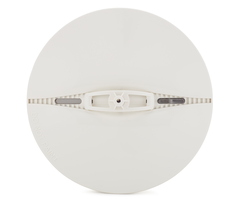
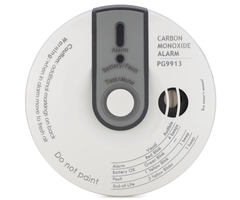
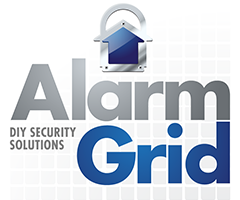
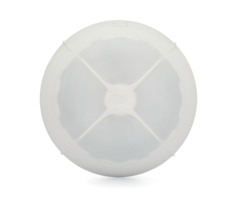
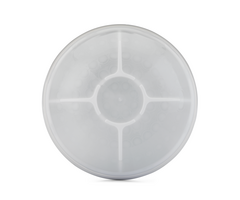
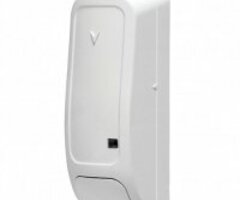
Related Categories
- PowerG Motion Sensors
- PowerG Glassbreak Detectors
- PowerG Flood Sensors
- PowerG Environmental Sensors
- PowerG Door & Window Security Sensors
- PowerG Carbon Monoxide Detectors
Description
In this video, Jorge from Alarm Grid shows you how to enroll a PowerG Sensor to a compatible alarm system. The PowerG Sensors are wireless devices from DSC. They are often used with sytems like the Qolsys IQ panel 2 Plus, the DSC Iotega, and any DSC PowerSeries NEO System with an added PowerG Transceiver Module. The enrollment process involves putting the panel into its wireless enrollment mode and then activating the auto-enrollment function of the PowerG Sensor. This is typically done by either inserting batteries inside the PowerG Sensor to power it on, or by pressing and holding the device enrollment button until its LED light is solid orange. Refer to the manual for your specific PowerG Sensor to determine the exact auto-enrollment process. Auto-enrollment is almost always recommended over manually enrollment, as it will prevent you from making a mistake when entering the Serial Number for the device. However, there are some rare cases where manual enrollment may be preferred.
PowerG Wireless Sensors support many great features that help to make them some of the truly best security devices on the market today. For one, they offer an exceptional wireless range of up to 2,000 feet away from the panel when used with a Qolsys IQ Panel 2 Plus, and up to 2 km away from a DSC PowerSeries NEO System with an added PowerG Transceiver. The PowerG Sensors are also extremely secure, as they utilize 128-bit AES encryption and Frequency Hopping Spread Spectrum (FHSS) technology for protection. There are all sorts of PowerG Sensors, covering everything from door and window contact sensors, motion sensors, glass break detection sensors, smoke detectors, and more. Many users will make sure to use exclusively PowerG Sensors when setting up a new security system, as they support top-of-the-line technology provide some of the best protection available. And as wireless sensors, most users find them super convenient and easy to set up.
https://www.alarmgrid.com/faq/how-do-i-enroll-my-powerg-wireless-sensor
http://alrm.gd/get-monitored
Transcript
Hey, DIYers. Jorge here from Alarm Grid. Today, we're going to be going over how to enroll some of your PowerG devices. So today, I'm actually going to be demonstrating the enrollment process of some PowerG devices into the IQ2 plus which has the PowerG receiver built into it. Now typically, PowerG devices whenever you're enrolling them, there's two ways to do it. One, they either auto enroll when you pull a low battery tab or you connect the battery to the actual device itself, and I'll be showing an example of that. And then the second way is, if it's powered on, you actually have to hit the enrollment button until the LED light turns like an orange-amberish color, and it has to stay steady. Once it stays a steady amber color, you release it and then it should send the signal to the panel. Sometimes that takes a couple of seconds like usually-- I would say give it up to three seconds, once you release it from the amber light, and I'll be also demonstrating that today as well. Now one very important thing to keep in mind is that, when you're learning in these sensors, if you have active sensors that are already installed in the field, let's say you're putting the panel into a home that already has some existing sensors, if people are walking around opening up doors, walking past motion detectors, you may get some sensors showing up in the auto enrollment phase when the panels in it that might not match the sensor you're trying to learn in, and I'll be showing you guys an example of that as well. So the very first thing we're going to need to do is put the panel in programming mode. To do that on the IQ2 Plus, and again, it's going to be different for every panel you guys are using. Today, the IQ2 Plus we're going to be hitting this very top center button right here. Once we do that, we're going to go to settings. Now from settings, we need to go into the installer or dealer menu to add devices. To do that, we're going to go to advanced settings, now you have the installer code, and the dealer code. If it's a brand new panel, the codes will be defaulted. Installer code is 1 1 1 1 and the dealer code should be 2 2 2 2. Now if the system has been installed by a local company or some other installation company, make sure you guys get your installer and your dealer code. This is your panel, you need to be able to do and add devices as you wish. So now that I'm here, I'm just going to use my installer code 1 1 1 1. If you use your code and you are not taken to a screen that shows installation, you guys do not have your installer code and/or your dealer code. So make sure you get this screen here where you see installation because that's where we need to go. You're going to go to installation, you are installing a device, what kind of device? It's a security sensor. And now, we're going to be here and we need to do auto learn sensor. The autolearn sensor is probably the easiest way to learning your devices all at once. But again, you have to make sure you're learning the correct one, so you always want to make sure whatever device you have in your hand, you're matching the ID number with what the panel picks up, because again, there might be active sensors in the field that might be tripping and the panel might pick up on them and might get that serial number instead, and it could cause a whole bunch of confusion. So it's always good to double check your work. So we're going to go to auto autolearn sensor. Now, today I'm going to be working with a series of PowerG devices. We have the PowerG wireless carbon monoxide detector, we have PowerG shock sensor, we have a PowerG key fob, we have a curtain PowerG motion detector, and then we have a dual tech PowerG motion detector. Dual tech means it does microwave technology and PIR, passive infrared. All right-- microwave detection, sorry. All right, so let's start off with the easy one first. Again, every sensor is going to be different. The one I'm going to start off with is going to be the wireless carbon monoxide detector. This one you simply plug the battery in, once you plug the battery in, it sends that signal automatically, you don't have to press the enroll button. If you guys have it already installed with the battery powered on, before you guys can roll that, then you might need to press and hold the enrollment button. But let me show you guys real quick that way, for those of you who don't have it. So it comes right out of the box. Now, for some of these devices, the battery will come not installed. So for this sensor here, there's a little battery compartment here, might have a screw in it, this one we've tested it before so we do not have the screw. But you'll need to unscrew it to release the battery compartment. Now the battery was already in here, however, it is not connected to the leads. So you're going to see as soon as I connect this battery to these two leads, the panel will let me know I got a signal. [BEEPING SOUND] You heard the seal detector beep, it's sent that signal and the panel picked up on it. Now, just to make sure that the ID number matches the one on my carbon monoxide detector, I see here the sensor, 2 2 0 4 1 2 7 is requesting to be added to your list, do you want to continue? You want to make sure that is the one that you're holding in your hand. So if you're looking at your sensor, you want to find the ID number, it's usually on a sticker on the back or on the inside of the device depending on the sensor you're holding. On this carbon monoxide detector, it's actually-- sometimes it takes a little bit of searching, it's on a sticker at the very bottom, right here it matches, 2 2 0 4 1 2 7, that's what I'm using. So after you've confirmed that your ID number on the sensor matches the ID number that the panel picked up on, you're just going to hit OK. After you hit OK, you'll see that the sensor type and the ID type are already inputted up at the very top. The sensor group is also already set to carbon monoxide. Now the source, it knows it's PowerG, you can enable voice prompts, you can disable them. This is just the editing screen that you're going to get whenever you guys auto learn any sensor. If you guys are learning in a bunch of door, window sensors, motion detectors, this is your time to go in and say, hey, this sensor is going to be in this area of the house, after you're done, you're going to go ahead and hit-- add new. It's adding the sensor, please wait-- Sensor added successfully. You can now go install your sensor wherever you need to go. Now, I'm going to go through these pretty fast here, just to show you guys how most of these just get installed. Now as you see there, this picked up, perfect example on a wireless sensor that I have not even touched. That means there's some sensors out in the field right now that are being activated that the panel is being picked up on. So you do not want to hit OK on that because that is not a sensor you're learning in, so I'm just going to hit cancel on that. Go ahead and grab my next device. Let's go ahead and go with the PowerG 9939. This is a four button key fob, and again, the panel keeps picking up on sensors. So we're just going to leave it like that for now until I have my device ready. So key fobs-- again, every single one is going to be different. This specific one is actually already has a battery, you might need to pull the battery tab if you're getting a brand new one. It does have a little compartment back here that you can remove the screw, get a little flathead, stick it, pop it open if you need to replace the battery. But the key fob, you need to press and hold on the start button until the LED light turns an amber color and it needs to stay solid. So not blinking, it needs to be solid and then you release. All right, this usually takes a couple of seconds, so am going to hit cancel on this, I'm going to go ahead and press and hold my start, wait for the amber light, that was the red light, I wait more-- amber, release. [BEEPING SOUND] 3 0 5 3 9 2 0. It's super small on this sticker here, but again, it's on the sticker ID is 3 0 5 3 9 2 0, confirm that it matches, hit OK, it's a key fob sensor group, again, hit add new to finish the device enrollment. It's going to say, adding sensor. Once it's successfully added, the panel will actually announce it. Next device, let's go with the shock sensor. The shock sensor, again, it has-- you want to actually looking at the manuals, look at the FAQ, panel pick up on another sensor, each device might have multiple buttons on the inside, so you want to make sure you're looking for the enrollment button. The shock sensor, this here is going to be a great example of one sensor with multiple buttons. If you're not looking at the manual, you don't know which the enrollment button is. All right, so some of these sensors are going to require a Philips-head or even a flathead. All right, I'm going to use my flathead to pop the cover open so I can remove the back, I'll grab that later, have a screw right here which you need to unscrew, loosen it up so you can take the actual board out of the cover, and then I'm just going to pop the actual device out. Now these use a little battery, right in here, this is a CR 123A, most of the bigger devices-- motion detectors, shock sensors, they're going to use this kind of battery. So you're going to plug it in, make sure positive, negative, you're going to see a red light, that is not the enrollment button, that is just a light letting the sensor know that has been powered on. Now this PowerG device, there's three buttons. One on the left, the right, and bottom left. The enrollment button for this one-- if you look at the manual is the bottom left button. So you're going to press and hold until you get the amber light solid, release it. Oh, Sorry, it will not-- the panel will not pick up on this signal if it's waiting for you to confirm one of the other signals. So go ahead and cancel on that, and press and hold it. Once it turn solid, release it. [BEEPING SOUND] Signal gets sent, 1 7 0 6 4 6 5. Again, each sensor is different, they have the ID numbers in different locations. So if you don't see it on the back, which this one has nothing on the back, you want to check the actual board itself. On this stock sensor, the ID number is actually right behind the battery. It's almost hidden, so you want to make sure that you're matching that ID number, 1 7 0 6 4 6 5 to the panel, you hit OK, add new. Sensor added successfully. Sensor added successfully. Let's go ahead and do a motion detector. All right, so this motion detector-- again, same concept, take it out, the battery will probably come separately in the box, take the cover off, you always want to make sure when you're taking covers off, you're looking for any screws that might need to be unscrewed so you can release the back plate from the actual cover. So you take that off. You're going to put the sensor in or the battery in sorry. Now from here, there should be an enrollment button which-- let me see where this one is, the enrollment button is going to be right next to the battery right here, LED light right in the center, press and hold it, lights up solid, I'll release. Match-- this one is on the back, ID number to the ID number on the panel, 1 2 2 3 5 2 7, hit OK, it's already set sensor type motion, you can change sensitivity level, give it a different sensor group, you can change the name again, you guys are going to configure the sensor however you guys want and then just add new to confirm. Sensor added successfully. And you have programmed in multiple PowerG devices all by just auto enrolling it. Some, again, they only require the battery to be plugged in. Others might require you to press and hold the enrollment button until the LED lights stays solid and then release it, all right, this was just a quick example of a bunch of different devices that require different enrollment processes and I was using the IQ2 Plus panel. Every system will be different, there might be different instructions to get into programming. Once you're done with your IQ2 Plus, you can just back out to the home screen, you might have a bunch of errors if your sensors are still open but you are now free to go ahead and start installing your sensors wherever you guys want to place them. If you guys have any questions regarding this video, please feel free to email us support@alarmgrid.com. If you guys thought this video was helpful, please like, subscribe, and hit the little bell icon to enable notifications. Thank you guys very much, I'll see you guys next time.
- Uploaded











